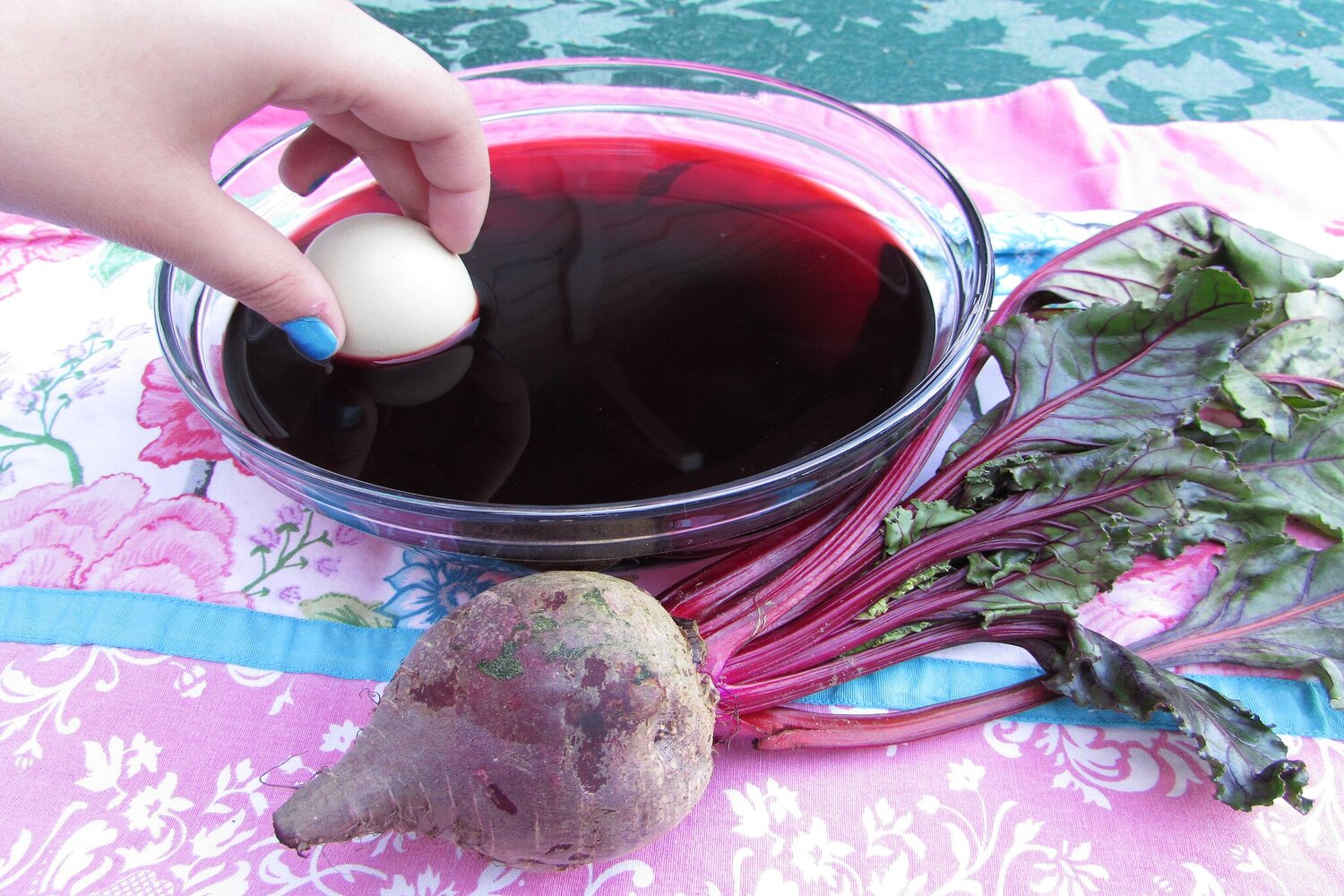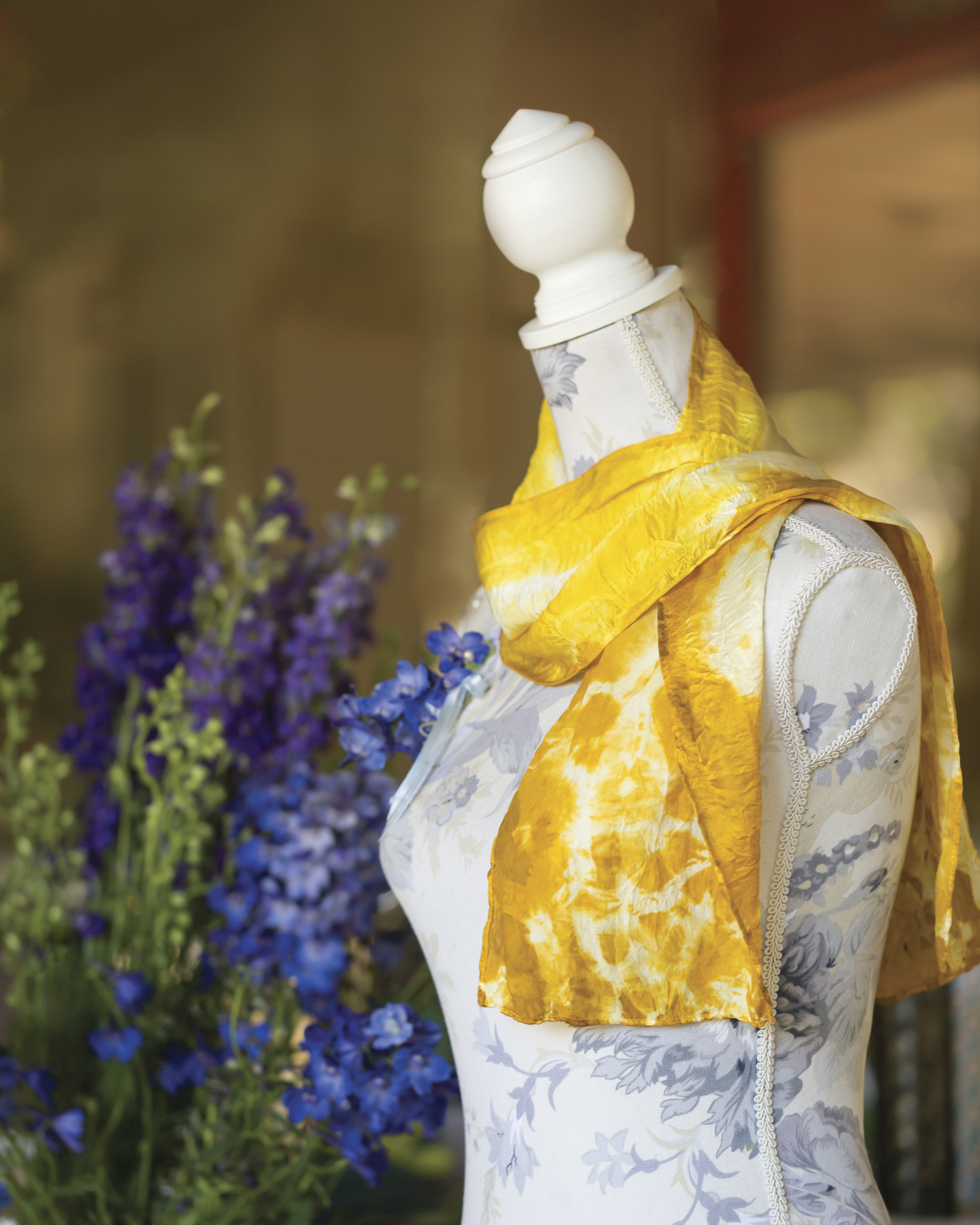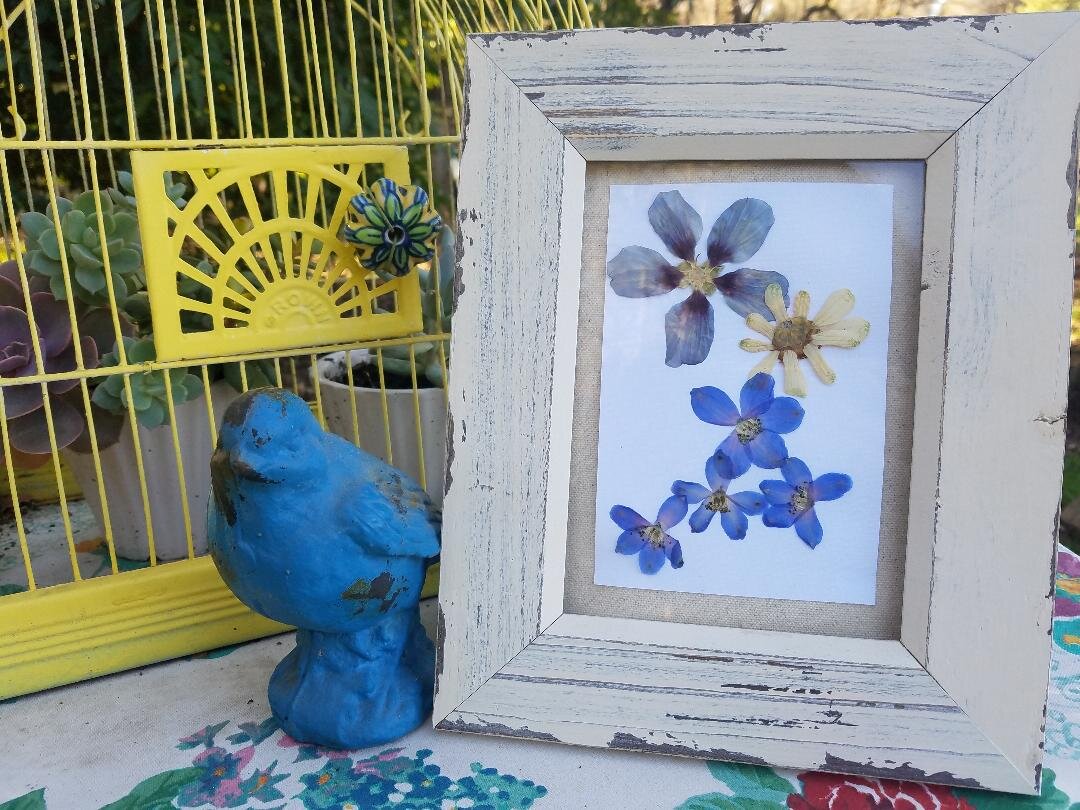Skip the commercial dyes and head to the fridge to color eggs beautifully and naturally! You can make gorgeous Easter egg dyes by using edible dye plants such as:
- Red and yellow onion skins – orange and yellow hues
- Beets – pink to red hues
- Red cabbage – blues
- Blueberries – blue to purples (leave the vinegar out)
- Ground Turmeric (3 Tbsp.) – yellow
- Cumin (3 Tbsp.) – yellow
- Chili powder (3 Tbs.) – orange
- Coffee – Light beige to rich, deep browns
- Tea – Light beige to rich, tawny browns
- Hibiscus tea – gray
- *Calendula and marigold flowers – yellow hues from lemon, orangy, to bronzy
Easter eggs can be dyed using a ‘hot’ bath, which means that the eggs are colored at the same time they’re being hard-boiled. Alternately, they can be dyed in a ‘cold’ bath, in which the eggs are dyed after they have been hard-boiled and cooled. The hot bath works faster. However, the cold process may be easier if you are dyeing with more colors, as you can create the dye baths in advance.
*Caution Notes: Before You Begin*
1. Remember to only use plant materials that you know to be safe for consumption. Only safe, edible foods should be used for dying eggs, as the assumption is that the eggs will be eaten.
2. If your hard-boiled eggs are going to sit in the dye for longer than 2 hours, they need to be refrigerated for health safety. Don’t leave them sitting in the dye container on the counter for hours.
Gather Your Materials and Supplies
- Stainless steel pots (or other non-reactive pots such as enamel or glass).
- Water
- Stove
- Glass jars or bowls (for cold method)
- Hardboiled eggs
- White vinegar
- Edible dye plants such as onion skins, berries, turmeric, beets, red cabbage, blueberries, red cabbage, turmeric, marigolds, coffee, calendula, etc.
Hot Natural Easter Egg Dye Method
Before adding the eggs, I place about 1 cup of the plant materials into a simmering pan of water for about 15 minutes or so. Then strain the plant materials from the hot water, so that only the liquid remains in the pot. I then place my eggs into the pot and add just enough water, so the eggs are covered by about 2″ of water. Add 1/8 cup of vinegar, then bring the pot to a boil for 17 – 20 minutes. This method both dyes and hard boils the eggs all at the same time.
Cold Natural Easter Egg Dye Method
Hard boil the eggs in a separate pot. Make up the dyes by simmering plant materials in a pot of water for 20 – 25 minutes. Strain off the dyestuff, add then add 1/8 cup of vinegar. Place the dye into wide-mouthed jars and let them cool. Once the dye is cool, add an already hard-boiled egg to each dye color and leave them there for at least an hour. For the most impressive colors, leave them in the dye for up to 10 hours. Your easter eggs are now beautifully and naturally dyed!
Thoughts Over Coffee
Nothing is written in stone here…there are other ways to do it!
- Do you have brown, blue, green, beige, tan, and even pink eggs from your chickens or from the store? Then you have some great base colors to work with! Naturally colored eggs create the most beautiful hues when they are over-dyed using a natural dyebath!
- How about combining dye colors to create other colors? Pour your cabbage blue dye + turmeric yellow dye = green!
- Try double-dipping. For example, dye an egg in a red cabbage dyebath. Pull it out and let it dry for 30 minutes, then pop it into a beet dyebath. Now you have purple!
*Calendula and marigold are both edible flowers and food safe when they are harvested from plants that are cared for organically. Don’t harvest edible plants or foods that have been sprayed with pesticides or other chemicals.
Interested in learning more about botanical (natural) dyes? Check out Homemade Playdoh Using Natural Dyes !






